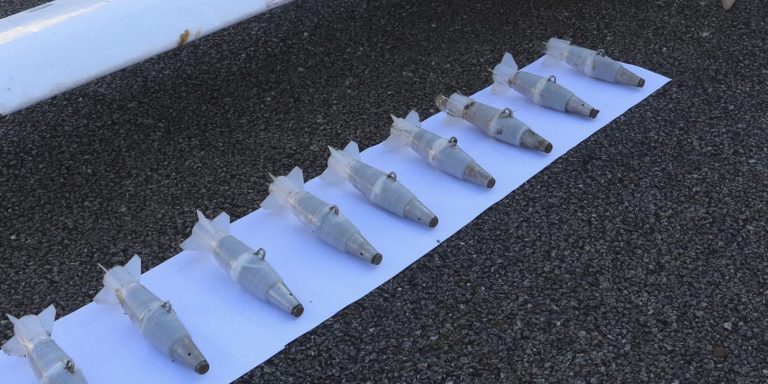INTELBRIEF
January 12, 2018
IntelBrief: The Rising Threat from Armed Drones

- On January 11, Russia accused Turkish-supported Syrian rebels of conducting swarming drone attacks on two Russian bases.
- The attacks on the Russian-operated Hmeimim air base and Tartus naval facility involved 13 low-tech drones carrying explosives.
- While the U.S. and other major powers have long used high-tech drones like the MQ-9 Reaper for surveillance and air-to-ground attacks, the next generation of military and repurposed civilian drones will be more widespread than their predecessors.
- The widespread availability of armed drones will be a significant and destabilizing shift for national armies and security forces engaged in combat and counter-terrorism.
The age of armed drones as the prerogative of nation-states is over, and the age of widely available unmanned armed drones is at hand. It will likely be among the most destabilizing technological changes in recent memory, for both the military and security forces engaged in counter-terrorism. Recent events demonstrate that as the capabilities and availability of drones modified to carry explosives increases, so will the challenges inherent in countering those threats.
On January 11, Russia accused Turkish-supported Syrian rebels of conducting a swarming drone attack on two of its military facilities in Syria. According to the Russian Defense Ministry, the January 6 attack saw 10 low-tech drones launched against the Hmeimim air base and another three against the Tartus naval station. The Ministry claimed it shot down seven of the attacking drones with anti-aircraft missiles, and ‘took control’ of the remaining six, using electronic countermeasures. The ministry did not say if the drones caused any damage or casualties. A Russian photograph, said to be of a captured drone, showed a device which appeared to be made out of plywood. Also of note, while typical hobby-style drones have a flight range limited to two kilometers, the Russians claim the attacking swarm flew more than fifty kilometers to their targets.
The Russian military has accused the United States of some involvement in the swarm drone attacks, claiming a U.S. reconnaissance aircraft was in the area—a claim the U.S. has categorically denied. However, the attacks are particularly significant as they occurred in what were once considered reliably safe zones for the Syrian regime and its foreign backers. Russian sources also claimed the attacks were launched from Syria’s Idlib province, where a cease-fire guaranteed by Turkey is supposed to be in place. Should that claim prove to be correct, it will likely create further difficulties for an already complicated and very tenuous agreement between Syria, Turkey, and Russia in northern Syria.
The so-called Islamic State has used drones before, in both Iraq and Syria, to drop grenades and other small explosives on security forces. The attacks on the Russian military bases are significantly different in both scope and scale—the distances traveled by the unmanned aircraft and the size of the attack. As the technology becomes cheaper and more effective, drones will likely be used frequently and with greater effect, by even small terrorist groups. Unlike military outposts near combat zones, like Russia’s Syrian bases, potential civilian targets lack countermeasures to stop drone attacks. Further, it is not practical to outfit all but the most obvious targets with countermeasures. Unauthorized flights by drones near airports and sporting events are already a major concern. A deliberate, well-designed attack using a drone swarm against soft targets, such as outdoor concerts or festivals, could be devastating. The threat of drone attacks by small non-state actors has been of minimal concern, but that is changing quickly. Once a problem for combat soldiers, armed drones have become a credible threat to civilian populations as well.
For tailored research and analysis, please contact: info@thesoufancenter.org